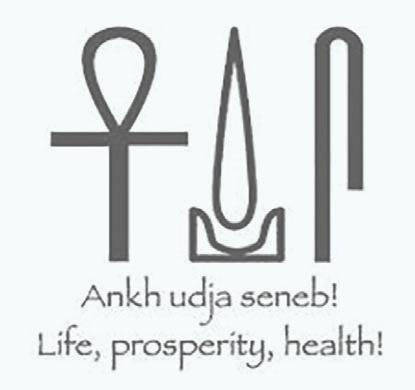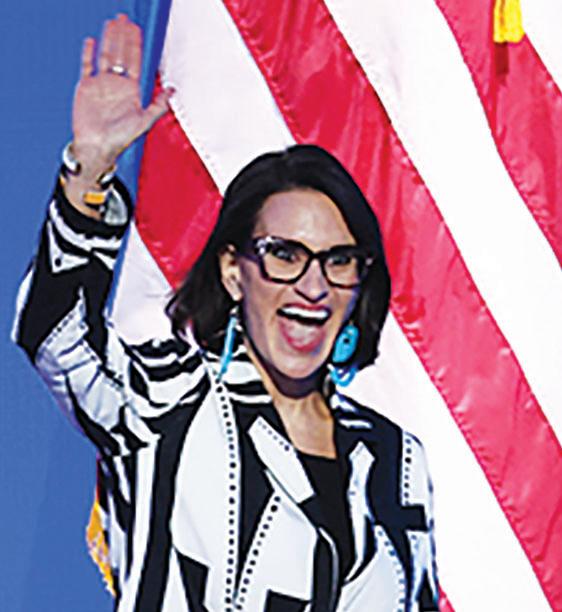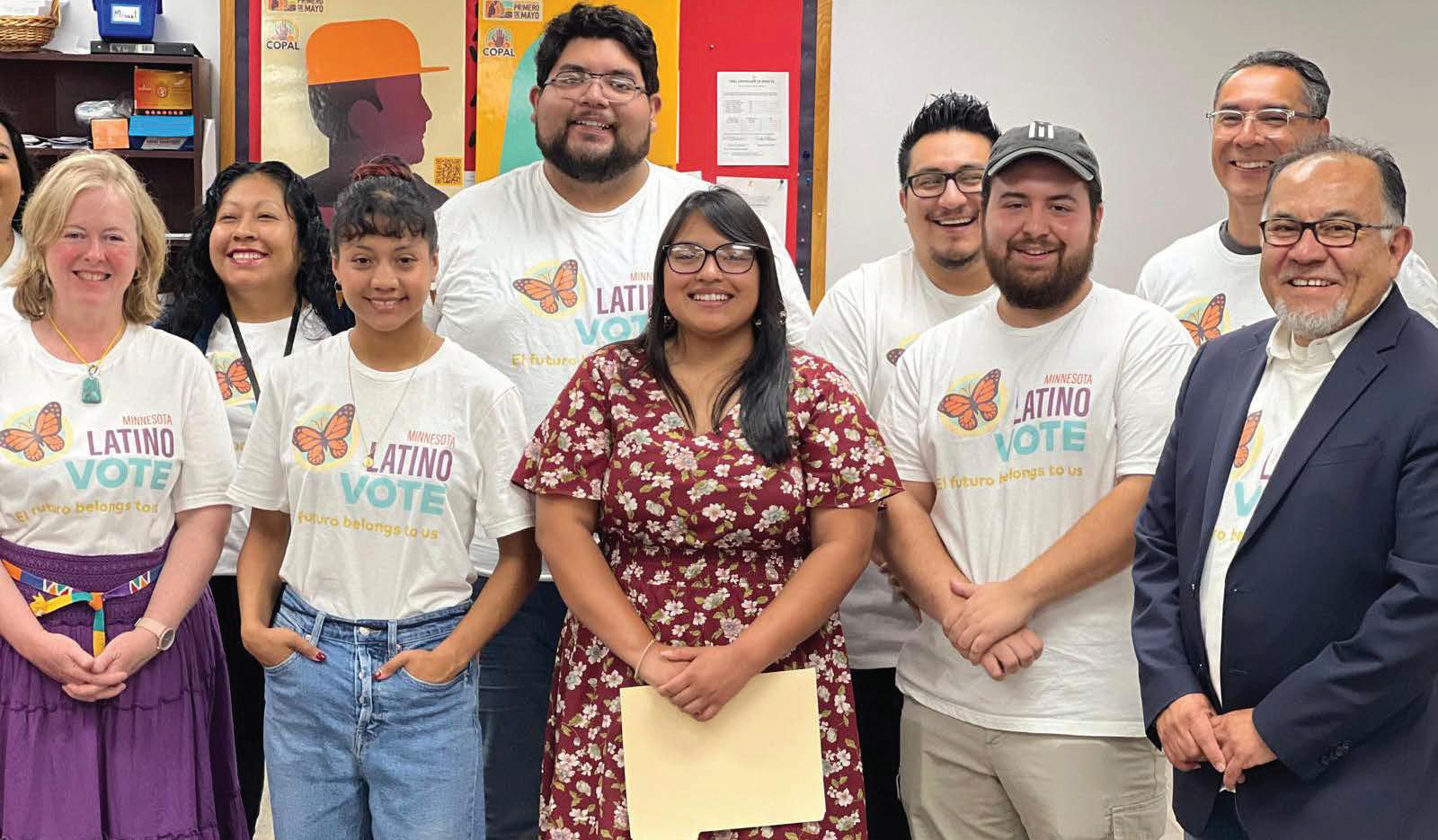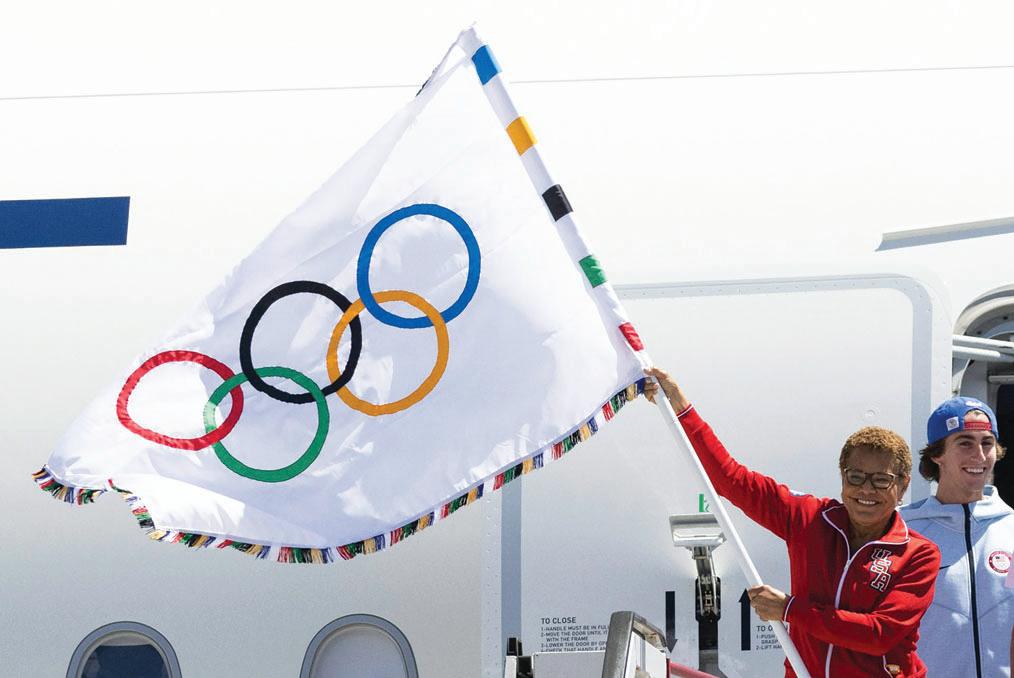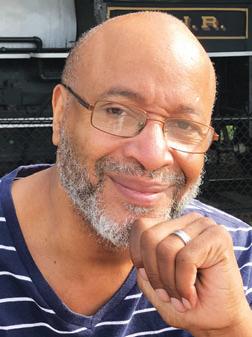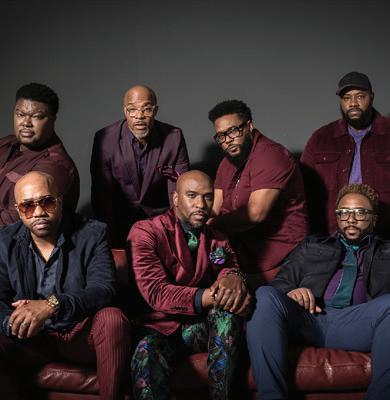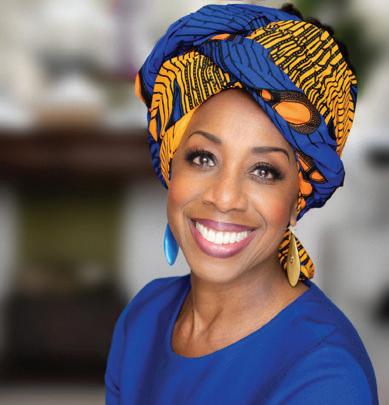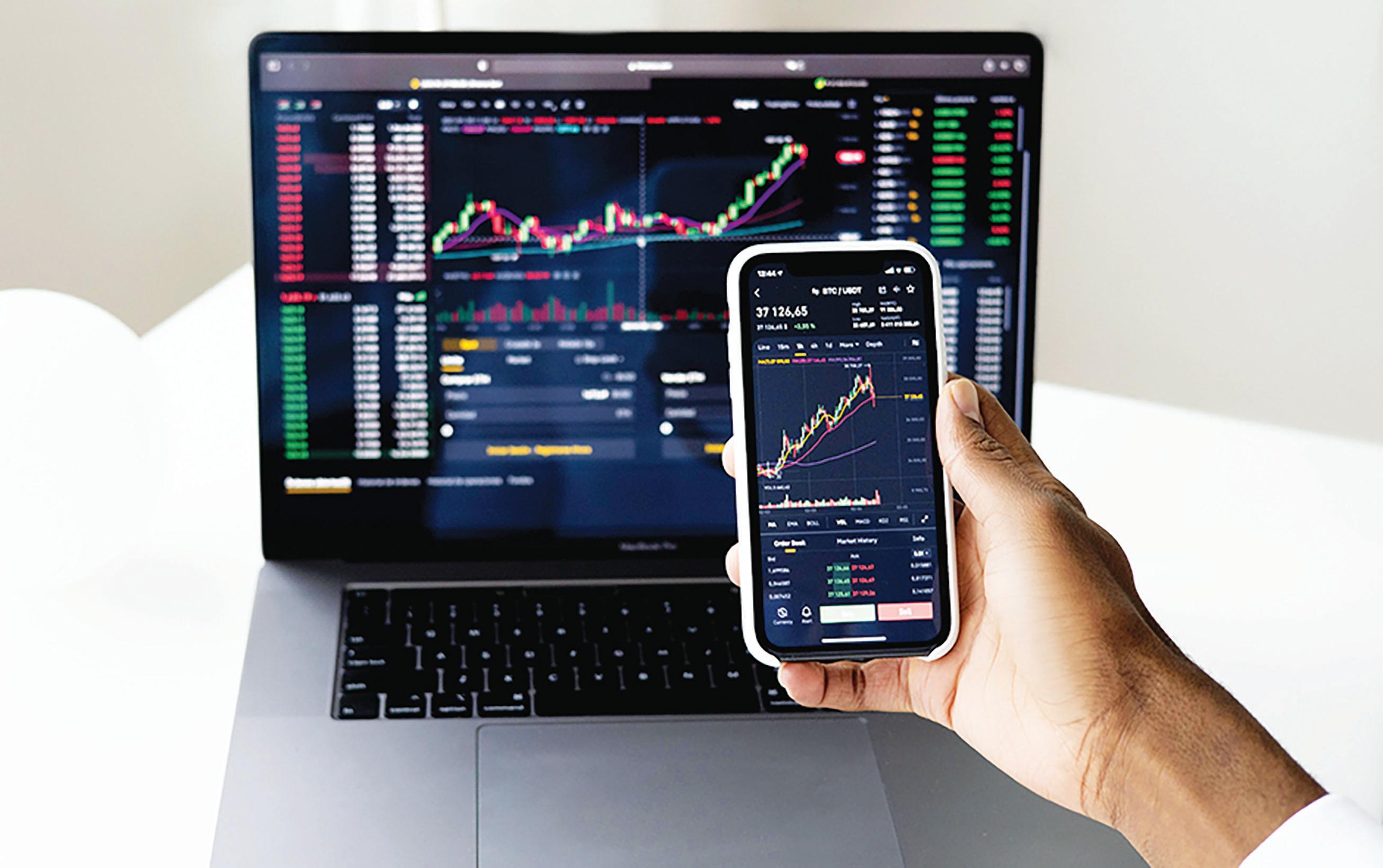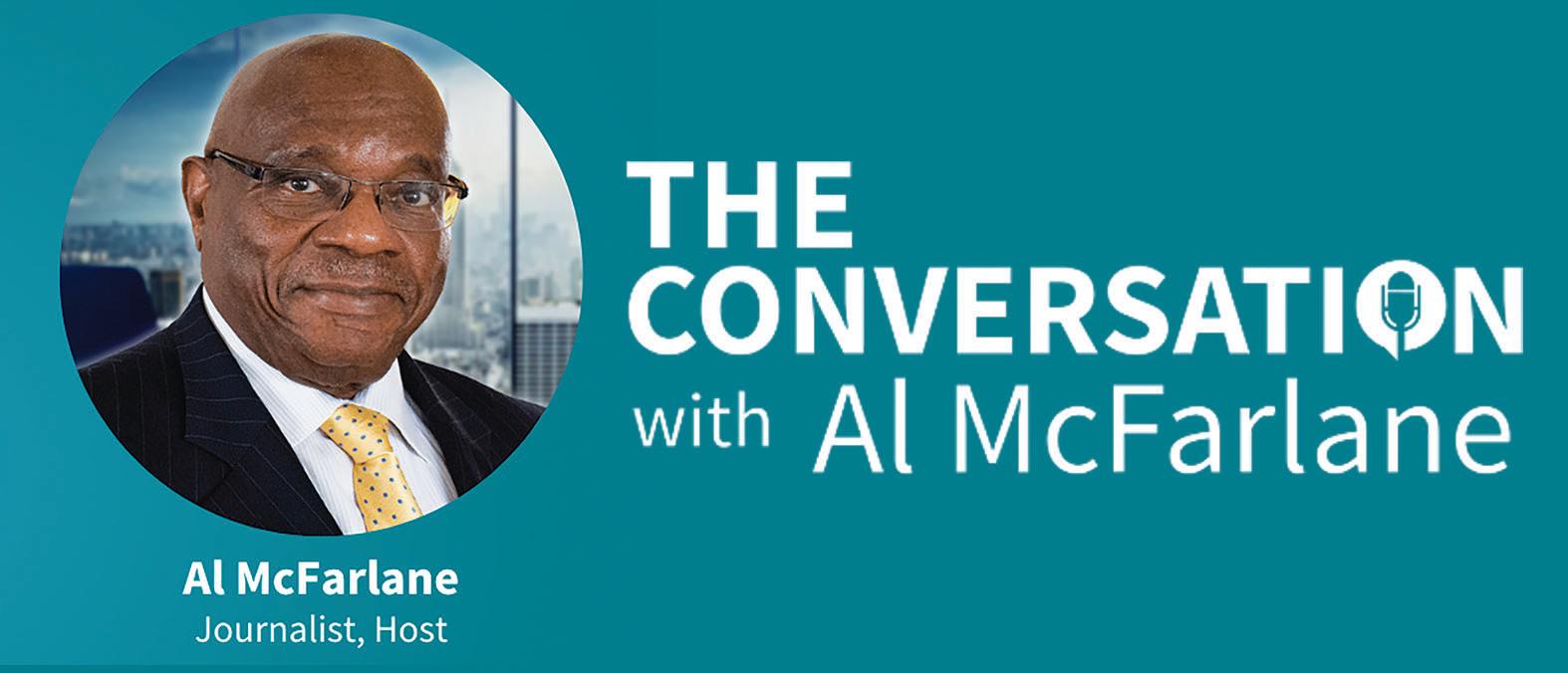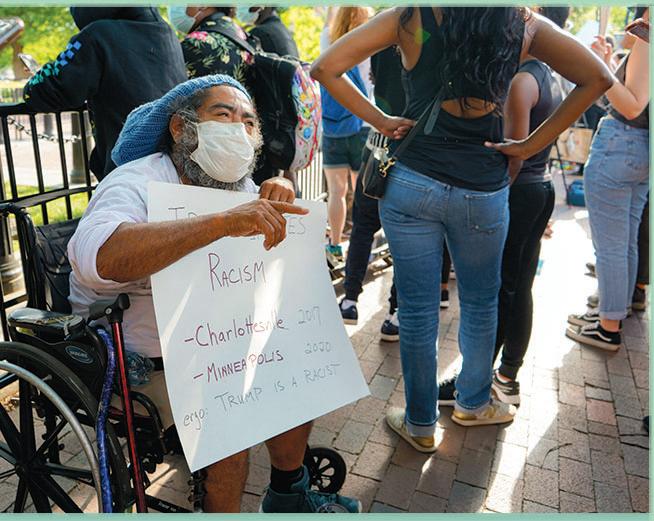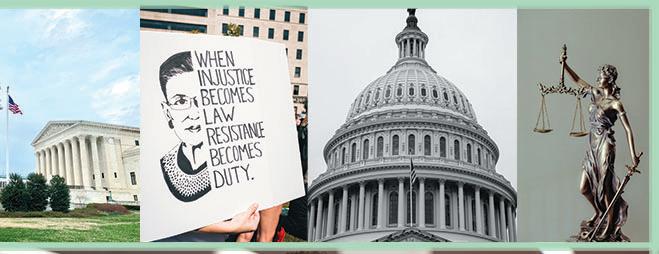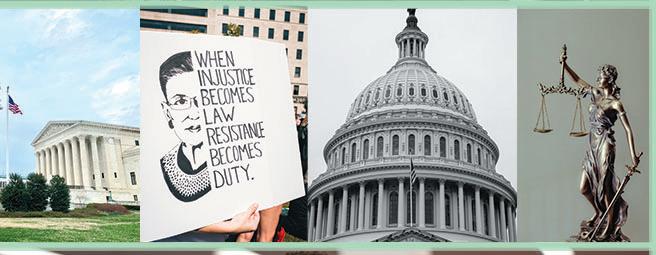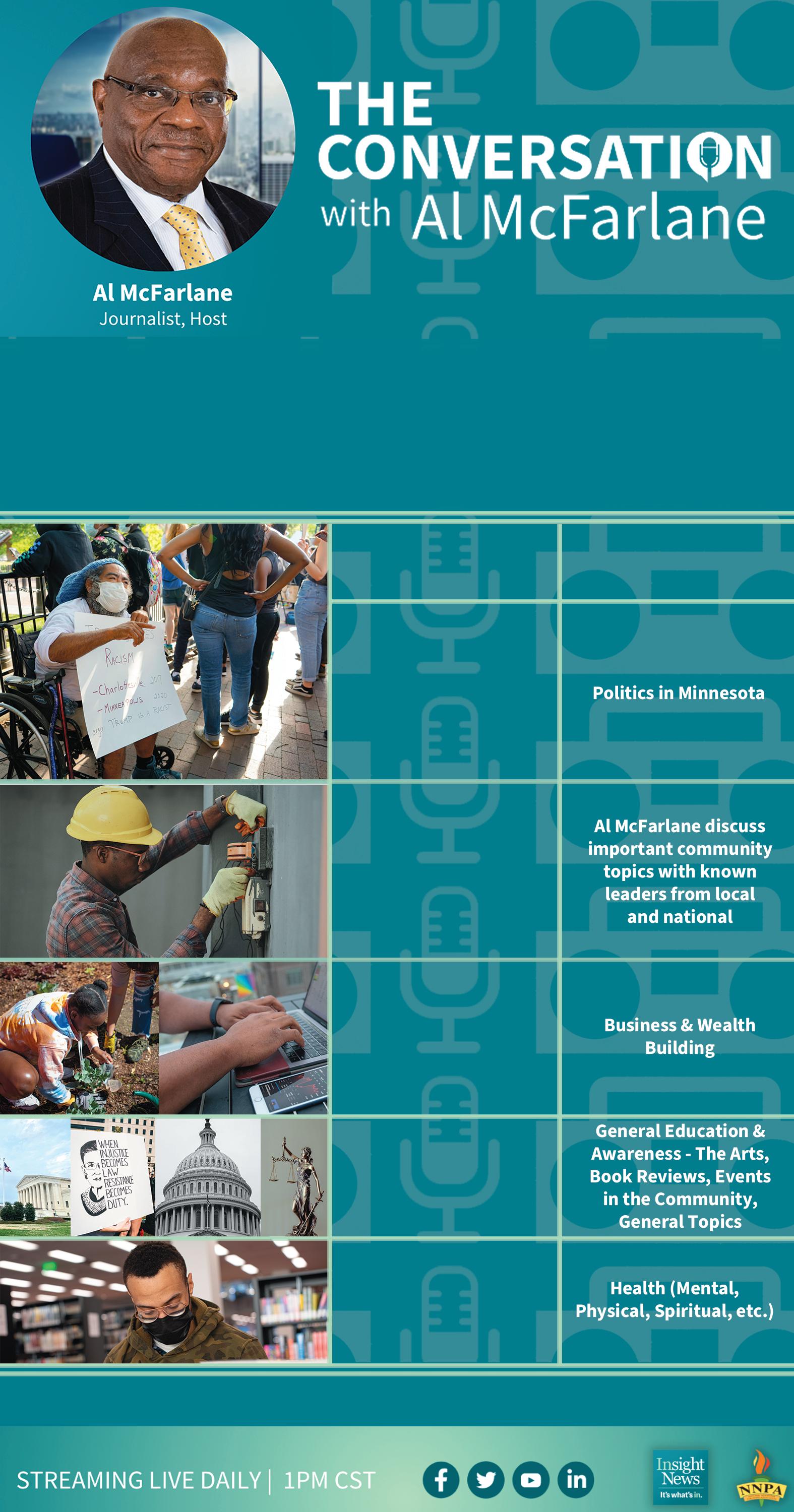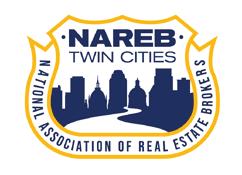Tim Walz and JD Vance have vaulted themselves out of national obscurity as they hustle to introduce themselves to the country, but the senator from Ohio has had a rockier start than the Minnesota governor.
A poll from The Associated Press-NORC Center for Public Affairs Research shows that Walz had a smoother launch as a running mate to Vice President Kamala Harris than Vance did for former President Donald Trump. About one-third of U.S. adults (36%) have a favorable view of Walz, who will introduce himself to his party when he speaks at the Democratic National
Convention on Wednesday. About one-quarter (27%) have a positive opinion of Vance. Significantly more adults also have an unfavorable view of Vance than Walz, 44% to 25%. Both are well-liked so far within their own parties, while independents are slightly more likely to have a positive view of Walz than Vance, but most don’t know enough about either one yet.
Both VP candidates still need to work to become better known — about 4 in 10 Americans don’t know enough about Walz to have an opinion about him, and roughly 3 in 10 don’t know enough about Vance. Still, both are much better known than they were before they were selected as vice presidential nominees.
Democrats like Walz, but many key groups don’t know enough As Walz prepares to speak at the convention, about 6 in 10 Democrats said they have a favorable opinion of him, including about 4 in 10 whose opinions are “very favorable.” Roughly 3 in 10 don’t know him well enough to have an opinion. This is the first measure of Walz’s favorability in an AP-NORC poll, but other polls showed he was virtually unknown nationally before he was chosen.
Many key Democratic coalitions still don’t know much about Walz. About 4 in 10 women don’t know enough to have an opinion of him, and about 4 in 10 young adults under age 45 say the same. About half
of Black adults and roughly 4 in 10 Hispanic adults don’t know enough to say whether they like him, either. Many lower-income adults and those without college degrees also don’t have a view of Walz.
Data from AP VoteCast shows that when he ran for governor in 2022, Walz won with the support of women, young voters, union households, those living in the suburbs, and people in urban areas. He split the support of white voters and men — two groups where the Harris-Walz team will try to undercut Trump’s advantage. He lost rural voters in the state, as well as households with military veterans.
Samantha Phillis, a 33-year-old home care nurse and mother of four from Mankato,
Minnesota, has known Walz for years. She attended Mankato West High School when Walz was a teacher there, and she was in the Gay-Straight Alliance when he was the faculty adviser. Since he became governor, she said, his policies have been “tremendous” for three of her children with disabilities. As a parent, she appreciated his program to provide free school meals for children.
Vice President Kamala Harris is accepting the Democrats’ presidential nomination Thursday, exactly 60 years after another Black woman mesmerized the nation with a televised speech that challenged the seating of Mississippi’s all-white delegation to the 1964 Democratic National Convention.
The testimony of Fannie Lou Hamer to the credentials committee in Atlantic City, New Jersey, was vivid and blunt.
She described how she was fired from her plantation job in retaliation for trying to register to vote and brutalized in jail for encouraging other Black people to assert their rights. She
told of arbitrary tests that white authorities imposed to prevent Black people from voting and other unconstitutional methods that kept white elites in power across the segregated South.
“All of this is on account of we want to register, to become first-class citizens,” Hamer told the committee. Whether every eligible citizen can vote and have their vote be counted is still an open question in this election, said U.S. Rep. Bennie Thompson, who spoke Wednesday at the Democratic National Convention in Chicago, about how his late father never got to vote because of Jim Crow restrictions. Thompson got his first practical experience in democracy at Hamer’s urging in 1966, when he was a college student in Mississippi and she recruited
him to register other Black voters.
Hamer has been the subject of appreciation this week during the convention.
“Our challenge as Americans is to make sure that this experiment called democracy is not just for the the landed gentry or the wealthy, but it is for everybody,” said Thompson, who led the House committee that investigated the Jan. 6, 2021 insurrection at the U.S. Capitol.
‘Is this America?’
Hamer was raised in cotton fields of the Mississippi Delta and became a sharecropper. She joined the Student Nonviolent Coordinating Committee and helped organize Freedom Summer, a campaign to educate and register Black voters. With Mississippi conducting
whites-only primaries, activists formed the racially integrated Mississippi Freedom Democratic Party to confront leading Democrats on a national stage.
“If the Freedom Democratic Party is not seated now, I question America,” Hamer told the credentials committee. “Is this America, the land of the free and the home of the brave, where we have to asleep with our telephones off of the hooks because our lives be threatened daily, because we want to live as decent human beings, in America?”
Former President Bill Clinton
-the-cuff
audience. “We’ve got a pretty clear choice it seems to me. Kamala Harris, for the people. And the other guy who has proved, even more than the first go-around, that he’s about me, myself and I,” Clinton said. Democrats gathered at Chicago’s United Center are hoping to build on the momentum Harris has brought since taking over the top of the party’s presidential ticket last month. They want to harness the Democratic exuberance that followed President Joe Biden stepped aside while also making clear to their supporters that they face a fierce battle with

Trump. The nation’s 42nd president and a veteran of his party’s political convention going back decades, Clinton was once declared the “secretary of explaining stuff” by Barack Obama, whose reelection bid in 2012 was bolstered by a Clinton stemwinder at that year’s DNC. Now 78 — the same age as Trump — Clinton’s delivery was sometimes halting, his movements slower and he mispronounced Harris’ first name twice. His left hand often shook when he wasn’t using it to grip the lectern. Still, he delivered several memorable, homespun
“He was a great asset to Mankato West, and we are huge fans of him. As far as Minnesota goes, he’s done great things for my family,” Phillis said. “I’m really encouraged to see what he could help Kamala Harris do as her vice president.” Phillis said she was always planning to vote for the Democratic candidate but has been thrilled by the energy and momentum Walz added to the campaign.
President Lyndon B. Johnson hastily called a news conference during Hamer’s testimony to try to divert attention from divisions that could alienate white voters in the South. TV cameras cut away, but networks showed her speech later.
Top Democrats said Hamer’s group could seat two delegates, but that was too little for the Freedom Democrats. And it was too much for the regular Mississippi delegation, which fled the convention without declaring loyalty to LBJ, and eventually left for good as conservative Democrats across the South, including segregationists, switched to the Republican party.
Leslie-Burl McLemore was one of the Freedom delegates and recalls how determined they were.
“Now that Gov. Walz is on the ticket, I’m all in.” Vance’s favorability has risen among Republicans The new APNORC polling shows that in the weeks since Vance was selected as Trump’s running mate, Republicans have gotten to know him better and have developed a generally positive view. About 6 in 10 Republicans now have a very or somewhat favorable opinion of Vance, a sharp rise since a mid-July poll conducted before the Ohio senator was announced as Trump’s running mate. In that poll, only about 3 in 10 had
“I knew in my mind, because I’m 23 years old and I’m vice chair of the Freedom Democratic Party, I’m not going to accept that damn compromise,” the retired political science professor at Jackson State University said recently at the Mississippi Civil
pronouncements including asking. “What does her opponent do with his voice? He mostly talks about himself. So the next time you hear him, don’t count the lies, count the I’s.”
It was the kind of folksy touch that Walz, the Minnesota governor, has brought to the Democratic ticket. A Midwestern teacher, football coach and dad, Walz also been the target of Republican criticism over how he’s portrayed his National Guard service and his personal story.
The night’s theme was “a fight for our freedoms,” with the programming focusing on abortion access and other rights that Democrats want to center in their campaign against Trump. Speaker after speaker argued that their party wants to defend freedoms while Republicans want to take them away. Colorado Gov. Jared Polis used a prop that has become a convention staple, an oversized book meant to represent the Heritage
AP Photo/Erin Hooley
By Linley Sanders Associated Press
By Emily Wagster Pettus Associated Press
By Will Weissert and Jonathan J. Cooper Associated Press
Sunshine
By Stacy M. Brown
In an electrifying moment at the Democratic National Convention (DNC) that likely set the tone for the party’s campaign, Vice President Kamala Harris made a surprise appearance on the opening night, seizing the stage to the triumphant anthem of Beyoncé’s “Freedom.” The crowd erupted with fire in her voice as Harris declared, “I want to kick us off by celebrating our incredible president, Joe Biden. Thank you for your historic leadership, for your lifetime of service to our nation, and for all you will
By Stacy M. Brown
At the
continue to do. We are forever grateful to you.” The first night of the DNC was more than a celebration; it was a battle cry. Democrats from all political backgrounds came together to honor President Biden’s legacy, which includes unwavering efforts to reduce costs for middle-class Americans, repair a deteriorating infrastructure, and defend democracy from unprecedented threats. The message was clear: Biden’s work is not done, and Vice President Kamala Harris and Governor Tim Walz are ready to continue that fight. Speakers who are most familiar with Biden, such as Senators Raphael Warnock and Chris Coons, as well as Dr. Jill Biden and Ashley Biden, shared stories that painted a
picture of a president who is unwaveringly dedicated to the American people. “In public and in private, President Biden never backed down from his vision for an America where everyone has a fair shot,” Warnock emphasized. Dr. Biden and Ashley Biden gave heartfelt tributes to the man who led the nation and his family with steadfast devotion. The emotional high point of the evening came when Biden, introduced by his daughter Ashley, took the stage to a thunderous ovation as “Your Love Has Lifted Me Higher” filled the arena. The crowd’s response was deafening, with chants of “We love Joe” and “Thank You, Joe” reverberating throughout the hall, a powerful testament to Biden’s connection
in vision and values of the twice-impeached and 34-times convicted former president, his vice-presidential nominee, and Vice President Kamala Harris and her surrogates were on full display in Chicago.
with the American people. In a speech that was as much a rallying cry as it was a reflection on his presidency, Biden delivered a stark reminder of what’s at stake. “Let me ask you… Are you ready to vote for freedom? Are you ready to vote for democracy and America? Are you ready to elect Kamala Harris and Tim Walz?” Biden’s words resonated as he recalled the perilous moment of his inauguration, just weeks after supporters of the twiceimpeached former president stormed the U.S. Capitol. “You cannot say I love my country only when you win,” Biden asserted. “The winter of peril and possibility has passed, and with a grateful heart, I
Former Secretary of State Hillary Clinton opened with a searing take on Trump’s legal woes. “Donald Trump fell asleep at his own trial,” Clinton recounted to an amused crowd. “When he woke up, he’d made his own kind of history — the first person to run for president with 34 felony convictions.” The statement sparked a wave of laughter and wild applause, leading to chants of “Lock him up!” echoing the irony of Trump’s previous attacks on her. “We have him on the run now,” Clinton declared.
Mayor Frey last week delivered his 2025 Budget Address last week in front of Council Members, City leaders, and community partners. His budget proposal continues the City’s investments in nation-leading affordable housing work, community safety and reform initiatives, historic climate work, inclusive economic recovery, and downtown revitalization.
These investments are aligned with the issues Mayor Frey has prioritized since day one, and a difficult budgetary cycle doesn’t mute the core values guiding the City’s shared work.
Some 2025 recommended budget highlights include: • A sustained investment in the
Here we vote campaign Simon is challenging Minnesotans to reclaim the top spot as the #1 state for voter turnout
By Robert Forrant Professor of U.S. History and
Studies,
Lowell
UMass
I wonder what my dad, a butcher and a die-hard union man, would think about the state of our country’s political affairs. Is it “Morning in America” as Ronald Reagan exclaimed? “American Carnage” as Donald Trump proclaimed? Or, do “we have nothing to fear but fear itself,” as Franklin D. Roosevelt put it?
Unions in the automotive, steel, rubber and other industries played a powerful role in FDR’s 1936 reelection. According to a poster made during his
administration, Roosevelt said, “If I went to work in a factory, the first thing I’d do would be to join a union.” Whether he meant it or not, as a labor historian I’ve long observed that the Democratic Party and unions stuck togetherback then like peanut butter and jelly.
Unions gave their preferred political party their votes, money and time – by volunteering to hold signs on Election Day, door-knock for candidates, and staff telephone banks to call prospective voters. And Democrats pushed policies that organized labor championed, like establishing a minimum wage, creating the Social Security system and introducing the federal oversight of union elections.
‘That’s what unions do’
Stepping out of Tim Walz’s shadow, Peggy Flanagan is poised to make
Lt. Gov. Peggy Flanagan’s long political career has taken quite a turn at the Democratic National Convention. Not only was she given the high-profile role of gaveling in and gaveling out the first day of the four-day Democratic rally, but she also has another job: introducing Minnesota Gov. Tim Walz to delegates and Democratic officials whose task will be to sell the Harris-Walz ticket. An Associated Press poll released Wednesday shows that, while Walz has promoted himself to superstar status on social media, many American voters say they don’t know much about him. About four in 10
Americans told AP pollsters they don’t know enough about Walz to have an opinion about him, and this group is larger
Minnesota Secretary of State Steve Simon
REUTERS/Mike Segar Lt. Gov. Peggy Flanagan onstage at the United Center during day one of the Democratic National
By Ana Radelat MinnPost
Mayor Jacob Frey
Jasmine Crockett
China leans into using AI even as the US leads in developing it
By Shaoyu Yuan
In the competitive arena of global technology, China’s ambitions in artificial intelligence stand out – not just for their scale but for their distinct strategic approach.
In 2017, the Chinese Communist Party declared its intent to surpass the United States to become the world leader in AI by 2030. This plan, however, is less about pioneering novel technologies and more about strategically adapting existing ones to serve state economic, political and social objectives.
While both China and the United States are actively pursuing AI technologies, their approaches differ significantly.
The U.S. has traditionally led in fundamental AI research and innovation, with institutions such as Massachusetts Institute of Technology and Stanford and tech giants such as Google and Microsoft driving breakthroughs in machine learning. This innovation-first approach contrasts with China’s focus on adaptation and application of existing technologies for specific state objectives.
The United States’ AI development is primarily driven by a decentralized network of academic institutions, private companies and government agencies, often with competing interests and a focus on commercial applications. In contrast, China’s AI strategy is more centralized and state directed, with a clear focus on supporting government initiatives such as social control
By Anne D’Innocenzio
Writer
and economic planning.
AI for ideological control At the heart of China’s AI strategy lies its effort to embed the technology in the machinery of the government’s ideological control. A prime example is the Xue Xi chatbot developed by researchers at China’s top-ranked university, Tsinghua University. Unlike Western AI models designed to foster open-ended dialogue, Xue Xi was trained in part on “Xi Jinping Thought” to indoctrinate users – likely initially to be party members in government – with Communist Party ideology.
This isn’t just a singular initiative but part of a broader trend. AI-driven surveillance systems, like the facial recognition technology deployed across the Xinjiang region of China, enable the government to maintain tight control over the area’s minority Muslim Uyghur population.
These technologies are not groundbreaking. They build on existing innovations but are finely tuned to serve the Communist Party’s efforts to maintain social order and prevent dissent. China’s AI prowess comes not by creating the newest technology but by mastering and deploying AI in ways that align with its ideological imperatives.
AI for economic control China’s AI strategy is also deeply intertwined with its economic ambitions.
Faced with slowing growth, the Communist Party views technology as the essential tool for pulling the country out of its economic slowdown. This is particularly evident in sectors such as manufacturing and logistics, where AI is used to drive efficiencies and
Grocery aisle deals and an emphasis on affordable but stylish clothes helped Target reverse a year-long sales slump, while Macy’s on Wednesday reported another quarterly decline and said sales for the fiscal year will be weaker than expected due to a “more discriminating consumer” outlook.

maintain China’s competitive edge in global supply chains. For example, companies such as online retail giant Alibaba have developed AI-driven logistics platforms that optimize delivery routes and manage warehouse operations, ensuring that China remains the factory of the world. Additionally, China’s social credit system, which rates citizens on their civic and financial behavior, represents a significant strategic initiative where AI plays an increasingly crucial role. China’s system is designed to monitor and influence citizen behavior on a massive scale. Although AI is not yet fully implemented across the entire social credit system, it is being integrated to track and analyze vast amounts of data, such as financial transactions, online interactions and social relationships in real time. This data is then used to assign scores that can
The difference in fiscal second-quarter results reported by the two retailers underscores the financial circumstances of U.S. shoppers: Consumers are still spending, but they’re being selective about where they make purchases when the costs of housing, food and other essentials remain inflated. When it comes to clothing, for example, they’re often choosing store label brands, which are typically less expensive than national brands.
“You have to believe that everybody is being a little more cautious as they kind of watch what’s going on in the macro environment and are just being more judicious in the purchases they make,” Macy’s CEO Tony Spring told analysts Wednesday.
Target’s shares shot up more than 12%, while Macy’s shares fell more than 11% in late morning trading.
Target’s profits and sales beat Wall Street expectations. Sales rose 3% to $25.45 billion in the latest quarter, slightly better than expected. But even though the number of transactions increased, the average amount spent by customers fell during the quarter, underscoring how Americans remain focused on deals, company executives said.
Target CEO Brian Cornell described how customers becoming choosier with how they spend their money poses a challenge for retailers.
“In an environment where consumers continue to make meaningful trade-offs, our results demonstrate the power that comes from the right combination of newness, seasonal relevance, and compelling value,” Cornell said during an earnings call with analysts.
The Minneapolisbased company reported that its comparable sales — the sales from stores and digital channels operating for at least 12 months — rose 2% in the second quarter. The increase in the April-June period reversed months of declines, including a 3.7% drop in the first quarter and a 4.4% decline during the company’s final quarter of 2023. The number of sales transactions increased 3% compared with the same period last year, with all six
affect various aspects of life, from loan approvals to travel permissions. As AI becomes increasingly embedded in the system, it is likely, I believe, to further reinforce state control and ensure societal compliance, prioritizing government oversight over personal autonomy.
Strategic exports On the international stage, China is exporting its AI technologies to expand its influence, particularly in developing nations. Through the Belt and Road Initiative, Chinese tech giants such as Huawei and ZTE are providing AI-driven surveillance systems to governments in Africa, Southeast Asia and Latin America. These systems, often framed as tools for improving public safety, are part of a larger strategy to export China’s governance model.
For instance, in Zimbabwe, Chinese firms have helped implement a nationwide facial recognition system under the guise of combating crime. Political activists in Zimbabwe fear that technology is being used to monitor political opponents and activists, mirroring its use in China.
By exporting AI technologies that are tightly integrated with state control, China is not only expanding its market share but also promoting its authoritarian model as a viable alternative to Western democracy.
Calculated strategy
China’s approach to AI is a calculated strategy of adaptation and application, rather than raw innovation. By mastering the use of existing technologies and aligning them with state objectives, China is not only bolstering its domestic control but also reshaping global power dynamics. Whether through ideological indoctrination, economic control, strategic exports or military advancements, China’s AI playbook is a powerful reminder that in the realm of technology, how tools are used can be just as transformative as the tools themselves.
Shaoyu Yuan does not work for, consult, own shares in or receive funding from any company or organization that would benefit from this article, and has disclosed no relevant affiliations beyond their academic appointment. This article is republished from The Conversation under a Creative Commons license.
AI for strategic military advantage China’s military ambitions are also tightly linked to its AI strategy. The People’s Liberation Army, China’s military, is investing heavily in AI-driven autonomous systems, including drones and robotic platforms. These technologies are not necessarily the most advanced in the world, but China is adapting them to fit its strategic needs. China is developing AI systems to support its naval operations in the South China Sea, a region of significant geopolitical tension. China is deploying autonomous submarines and surveillance drones to monitor and potentially disrupt foreign military activities in the region. This strategic use of AI in military applications highlights China’s focus on using existing technologies to achieve specific geopolitical objectives, rather than seeking innovation for its own sake.

main merchandising categories, including fashion and home goods, showing strength. Online sales rose 8.7%, and comparable clothing sales increased 3% from a year ago as customers embraced new store brands like All in Motion and Wild Fable. Target now has 45 private labels, including Figment, a kitchenware collection launched last year.
To boost sales, Target said this spring that it would cut prices on thousands of necessities ranging from diapers to milk. The retailer also is rolling out programs to make shopping easier as it competes with fellow discounters Walmart and Amazon. Target announced a paid membership program in April called Target Circle 360, which comes with unlimited free same-day delivery for orders over $35 and free twoday shipping for all orders. Such moves appear to be paying off Target earned $1.19 billion, or $2.57 per share during the quarter, edging out Wall Street expectations by a penny, according to a survey of industry analysts by FactSet. That compared with $835 million, or $1.80 per share, during the year-ago period. The company increased its annual profit outlook but was still circumspect with its sales guidance, saying sales could be unchanged from a year ago amid overall economic uncertainty.
Macy’s, on the other hand, saw weaker sales even as expense-cutting helped it swing back to a profit in the second quarter.
The company, which also operates upscale Bloomingdale’s stores and cosmetics chain Bluemercury, reported that net sales fell nearly 4% to $4.94 billion from $5.13 billion a year ago and below the $5.06 billion that the industry had projected. Macy’s downgraded its annual sales forecast, citing a need to roll out more discounts to entice customers.
Macy’s posted a profit of $150 million, or 53 cents per share, in the three-months ended Aug. 3, topping Wall Street expectations for per-share earnings of 30 cents, according to a survey by FactSet. It had a loss of $22 million, or 8 cents per share, in the same period a year ago.
The results came one month after Macy’s terminated its monthslong buyout talks with two investment firms, citing a substandard offer and the lack of certainty over financing.
Macy’s said in July that it will focus on its own turnaround efforts. That previously unveiled plan includes closing 150 Macy’s stores over the next three years and upgrading the remaining 350 stores.
The overhaul includes adding more salespeople to fitting areas and shoe
departments. It’s also pivoting more to luxury sales, which have held up better overall. Macy’s said it will open 15 higher end Bloomingdale’s stores and 30 luxury Bluemercury cosmetics locations to cater to customers seeking higher end services and goods.
Spring, who became Macy’s CEO and chairman earlier this year, said that the company is seeing two consecutive quarters of comparable sales gains in Macy’s first 50 stores that it has overhauled.
The company reaffirmed its annual outlook for earnings per share but said annual net sales would range from $22.1 billion to $22.4 billion, lower than its May projection of $22.3 billion to $22.9 billion. Analysts were expecting $22.53 billion, according to FactSet. Macy’s also projected that comparable sales for the year, including for licensed businesses offering jewelry and cosmetics and in its third party marketplace, will be worse than previously projected.
The results follow Walmart’s
Peter Parks/AFP via Getty Images
The Chinese government has made extensive use of existing AI technologies, including for surveillance.
AP Photo/David Zalubowskim File
A shopper heads into a Target store on Jan. 11, 2024, in Lakewood, Colo.
1
a favorable view of him, and about 6 in 10 Republicans said they didn’t know enough about Vance to have an opinion. In the most recent poll, about 2 in 10 Republicans have an unfavorable view of Vance, and about one-quarter say they don’t know enough about him to have an opinion. Adults older than 45 are somewhat more likely than younger ones to have a positive opinion of Vance, 32% to 22%.
Hamer
From 1 From
Rights Museum in Jackson.
“We had four white folk in our delegation and the white folks didn’t have no Black folk in their delegation,” McLemore said. “So, hey, we had God on our side.”
Risking beatings and death
Other organizers included Ella Baker, Bob Moses, and David J. Dennis Sr. Only days before the 1964 convention, Dennis gave an impassioned eulogy at the funeral of James Chaney, the Freedom Summer volunteer who was killed along with Michael Schwerner and Andrew Goodman by Ku Klux Klansmen in Philadelphia, Mississippi.
That violence was fresh when Hamer testified about being evicted after trying
Data from AP VoteCast shows that when Vance ran for Senate in Ohio in 2022, he earned the support of many groups that have become
to register to vote in 1962. She said the plantation owner told her, “’We’re not ready for that in Mississippi.’”
Hamer also recounted being jailed and beaten in 1963 in Winona, Mississippi, at the command of white law enforcement officers, after she and several other Black people returned from a voter education workshop. The beating permanently damaged her eyes, legs and kidneys.
On Tuesday, the first Mississippi Freedom Trail marker outside the state was unveiled in Atlantic City to commemorate the Freedom Democrats. Another marker, dedicated in June in Winona, recognizes the jail beatings. Euvester Simpson was 17 in 1963, and shared a cell with Hamer. She said she heard Hamer being whipped in another room.
“Mrs. Hamer told me she was in a lot of pain,” Simpson said, recalling how she soothed Hamer with damp
can pry this wedding band from my cold, dead, gay hand.”
ceremonial volume and said he was going to keep it and show it to undecided voters.
The former president has distanced himself from Project 2025, but its key authors include his former top advisers. His running mate, JD Vance, wrote the foreword for the Heritage Foundation CEO’s new book.
Florida Rep. Debbie Wasserman Schultz told the story of a woman in her state, which enacted new abortion restrictions after the Supreme Court overturned Roe v. Wade, who was forced to carry to term a child with a fatal illness, only to watch the newborn die just hours after birth.
Dana Nessel, Michigan’s attorney general and an openly gay woman, declared, “I got a message for the Republicans and the justices of the U.S. Supreme Court: You
3
stand before you to report that democracy has prevailed. But now, democracy must be preserved.” Biden highlighted the progress made under his administration, pointing to economic recovery, healthcare expansion, and the battle against corporate greed. He singled out Harris’s critical role in these achievements. “We’ve gone from economic crisis to the strongest economy in the world… More Americans have health insurance than at any time in American history. And we finally beat big pharma.
Oprah Winfrey, who long hosted her signature talk show from Chicago, picked up on one of Democrats’ favorite themes of late, scoffing at Republican vice presidential nominee JD Vance having once derided “childless cat ladies” as he argued that Americans should be having more children. Winfrey said that if a burning house belonged to a “childless cat lady,” neighbors would still help and “try to get that cat out too.”
“We are beyond ridiculous tweets and lies and foolery,” she said of Trump, before referencing a recent comment he made to supporters about only having to vote once more — for him — and never again.
“You’re looking at a registered independent who’s proud to vote again and again and again, because that’s what Americans do,” she said. “Voting is the best of America.” Trump bashed the convention as a “charade” and noted the fact that he
Guess who cast the tie-breaking vote? Vice President and soon-to-be President Kamala Harris. Now it’s the law of the land—$35 a month for insulin.”
The evening was charged with passionate speeches that struck the heart of the nation’s issues. Former Secretary of State Hillary Clinton delivered a searing indictment of Donald Trump, contrasting Harris’s steadfast dedication to American values with Trump’s chaotic legacy. “Kamala won’t disrespect our military and our veterans,” Clinton declared to thunderous applause. “She will defend democracy and our Constitution and will protect America from enemies foreign and domestic. Donald Trump fell asleep at his own trial, and when he woke
the bedrock of Trump’s political base. About 6 in 10 male voters in the state supported Vance, as well as voters age 45 and over. He also outperformed with young men compared to Republicans nationally. About 6 in 10 male voters under 30 voted for Vance in Ohio, compared to about half for Republican candidates nationwide.
Mary Lynch, a 62-year-old Republican from
rags and the gospel song, “Walk With Me.” “Her back was hurting. Her hands were bleeding. She was swollen, because she had used her hands to kind of guard her back,” Simpson said. “State-sanctioned violence” is among the many issues from Hamer’s 1964 testimony that still resonate, said Keisha N. Blain, a Brown University historian. She cited the July 6 shooting death of Sonya Massey, a Black woman, by a deputy who responded to her 911 call.
“This theme is still lingering, even if the specific circumstances are different,” Blain said.
Advocating for bodily autonomy
While Hamer didn’t make it part of her testimony at the convention, she also was an advocate for bodily autonomy.
A white doctor had performed a hysterectomy without her consent when she had a uterine
has been a frequent topic of conversation. He also singled out his predecessor, Obama, for a highly critical convention speech Tuesday night, saying Obama had been “nasty.”
Democrats recognized the hostages still being held by Hamas after its Oct. 7 attack on Israel in which 1,200 people were killed. Jon and Rachel Goldberg-Polin brought some in the arena to tears as they paid tribute to their son Hersh, who was abducted in the attack.
Freeing hostages “is not a political issue. It is a humanitarian issue,” Jon Goldberg-Polin said, adding that “in a competition of pain there are no winners.”
The Israel-Hamas war has split the Democratic base, with pro-Palestinian protesters demonstrating outside the United Center and several speakers this week acknowledging civilian deaths in the Israeli offensive in Gaza. More than 40,000 people have died in Gaza, according to local health authorities.
In another contrast with the GOP, Democrats
up, he made history as the first person to run for president with 34 felony convictions.” Representative Alexandria Ocasio-Cortez delivered a fiery endorsement of Harris, framing her as the champion of the middle-class needs. “In Kamala Harris, we have a chance to elect a president who is for the middle class because she is from the middle class,” Ocasio-Cortez proclaimed. “She understands the urgency of rent checks, groceries, and prescriptions. She is as committed to our reproductive and civil rights as she is to taking on corporate greed. She is working tirelessly to secure a ceasefire in Gaza and bring hostages home.”
Ocasio-Cortez didn’t hold back in her critique of Trump, accusing him of being
Marquette, Michigan, said she’s followed Vance through TV interviews since before he ran for Senate. She said her positive view of him has only grown the more she learns about him. She appreciates his support for family-related policies, like anti-abortion measures and school choice.
Lynch supported Republican Nikki Haley during the GOP primaries, but she
tumor removed in 1961. Such treatment of Black women was so common in the South that Hamer called it a “Mississippi appendectomy.”
Blain noted in her 2021 book, “Until I Am Free: Fannie Lou Hamer’s Enduring Message to America,” that Hamer feared both abortion and birth control were “white supremacist tools to regulate the lives of impoverished Black people and even prevent the growth of the Black population.”
Hamer kept speaking after the convention, famously saying she was “sick and tired of being sick and tired” over how long America was taking to ensure fair treatment. Another year went by before Johnson signed the Voting Rights Act of 1965, and then nearly another year before the Supreme Court upheld the law.
A 2013 Supreme Court ruling dismantled a significant part of the Voting Rights Act — the requirement for states with a history of racial
argued that they are offering “real leadership” on the U.S.Mexico border, working toward policy solutions rather than simply demonizing immigrants and trying to use the issue as a political motivator for their base. That was part of a larger effort to defuse Trump’s effort to make cracking down on the border a centerpiece of his campaign.
Texas Rep. Veronica Escobar, from the border city of El Paso, said, “Forget what you hear on the news, I’m from there” and added, “When it comes to the border, hear me when I say, you know nothing, Donald Trump.”
Rep. Bennie Thompson of Mississippi spoke about the attack on the U.S. Capitol on Jan. 6, 2021. He chaired a congressional committee that investigated the mob overrunning the Capitol, saying, “They wanted to stop the peaceful transfer of power for the first time in American history.”
“Thank God they failed,” Thompson said. Many Americans
a self-serving demagogue.
“Donald Trump would sell this country for a dollar if it meant lining his own pockets and greasing the palms of his Wall Street friends,” she said. “I, for one, am tired of hearing about how a two-bit union buster thinks of himself as more of a patriot than the woman who fights every single day to lift working people out from under the boots of greed trampling on our way of life.” The night was filled with moments that galvanized the crowd. Golden State Warriors Head Coach Steve Kerr, invoking the words of Steph Curry, declared, “After the results are tallied that night, we can tell Donald Trump, ‘Night, night.’“UAW President Shawn Fain tore off his jacket to reveal a shirt emblazoned
plans to vote for Trump in November. She likes Trump’s policies, but she struggles with his personality. She sees Vance as a strong future leader for the Republican Party.
“I like (Vance’s) personality a lot. He says things nicer. He doesn’t use hyperbole,” Lynch said. “If Trump wins with JD Vance, I look forward to having JD Vance run for president next.”
discrimination in voting, mainly in the South, to get federal approval before changing the way they hold elections. “Many communities across the nation are grappling with attempts at voter suppression,” Blain said.
Hamer also advocated for fair treatment of Black farmers. The Biden administration in late July announced more than $2 billion in direct payments to Black and minority farmers who faced discrimination from the U.S. Department of Agriculture.
GOP vice presidential nominee JD Vance called this “disgraceful,” suggesting it is racist against white people. But Thompson said Black landowners had been refused credit and denied support from the USDA for many years. “The people who ran the federal agencies were part and parcel to the system of disenfranchisement,” Thompson said.
Still an inspiration Wil Colom, a
had never heard of Walz until Harris made him her running mate. In his first weeks of campaigning, he’s charmed supporters with his background and helped to balance Harris’ coastal background as a cultural representative of Midwestern states whose voters she needs this fall. But Walz also has faced scrutiny, including questions about embellishing his background. His wife this week clarified that she did not undergo in vitro fertilization, as Walz has repeatedly claimed, but used other fertility treatments. Republicans also have criticized Walz for a 2018 comment he made about carrying weapons in war. Though he served in the National Guard for 24 years, he did not deploy to a war zone. Walz has been working on his speech to the convention for about a week and planned to use a teleprompter for a first time, which he practiced in preparation. He plans to talk about growing up in Nebraska, his National Guard service, his work as a teacher and coach and his time in Congress before he
with the words “TRUMP IS A SCAB,” igniting the crowd into a fervent chant of “Trump’s a scab! Trump’s a scab!” In one of the night’s most pointed moments, Rep. Jasmine Crockett drew a stark contrast between Harris and Trump: “She became a career prosecutor while he became a career criminal. Who would you hire? Donald Trump or Kamala Harris? Kamala Harris has a resume, and Donald Trump has a rap sheet with 34 felonies, 2 impeachments, and 1 porn star to prove it.” The NAACP President Derrick Johnson and Melanie Campbell, the President and CEO of the National Coalition on Black Civic Participation, led a standing ovation for civil rights icon Rev. Jesse Jackson during the celebration.
The poll of 1,164 adults was conducted August 8-12, 2024, using a sample drawn from NORC’s probabilitybased AmeriSpeak Panel, which is designed to be representative of the U.S. population. The margin of sampling error for all respondents is plus or minus 3.8 percentage points.
Mississippi lawyer who now serves on the Democratic National Committee and is in Chicago for the convention, was a teenager when he heard Hamer speak at a church in Ripley, Mississippi, in October 1964. The church was burned after her appearance. Colom said the speech was “electrifying” and motivated him to challenge segregation at theaters and swimming pools.
Colom said he visited Hamer at her modest home in Ruleville before she died of cancer at 59 in 1977.
“She had no perception, which surprised me, of what an important figure she had become,” Colom said. The Freedom Democrats helped lead the way to President Barack Obama’s election in 2008 and now to Harris’ nomination, Dennis said.
“To me, it’s all connected,” Dennis said. “It’s like a relay race. One baton moving to the next.”
was elected governor two years ago.
His primary warmup act was a two-term president and generational leader of his party who noted that he attended his first convention in 1976 — then corrected himself by saying it was actually 1972.
“I have no idea how many more of these I’ll be able to come to,” Clinton said. Still, he implored delegates about the Harris-Walz ticket, “If you can get them elected and let them bring in this breath of fresh air, you will be proud of it for the rest of your life.”
“Your children will be proud of it,” he said. “Your grandchildren will be proud of it.”
Associated Press writers Zeke Miller in Chicago, Jill Colvin and Ali Swenson in New York and Chris Megerian in Washington contributed to this report.
Chicago Mayor Brandon Johnson also delivered a powerful message that resonated deeply with the audience. “I know that my daughter will see not only a reflection of herself in the White House, but she will experience the deepest part of American values… Kamala Harris—she’s got us.” Harris’s words from earlier in the night echoed as the event ended: “We are at a pivotal moment. The choices we make now will determine the future of our nation. Together, we will fight for the soul of America and build a future where everyone has a fair shot. Our best days are still ahead, and we are ready to lead.”
“Thanks to our City team’s creative leadership and thoughtfulness, we’ve managed to do what felt like a pipe dream a few months ago: keep the levy increase under 10%,” said Mayor Frey. “Through efficiencies and many hard choices—we’ve managed to drive the levy down to 8.1%.
“I am not expecting us to celebrate this lift, because our residents have a new lift of their own with increased property taxes. But what this
budget provides is a way through. We’re doubling down on programs that work, we’re ensuring our resources are used effectively, and we’re making sure our community feels the benefit.” Frey From 3
Rep. Alexandria
Crockett
From 3 From
“But no matter what the polls say, we can’t give up.”
Rep. Jasmine Crockett of Texas highlighted the divergent paths of Harris and Trump. “One candidate worked at McDonald’s while she was in college at HBCU. The other was born with a silver spoon in his mouth and helped his daddy in the family business: Housing discrimination,” Crockett said, sparking boisterous applause from the audience. She continued, “She became a career prosecutor, while he became a career criminal, with 34 felonies, two impeachments, and one porn star to prove it.” Reflecting on her early days in Congress, Crockett shared a personal testimony about Harris’ influence.
register to vote, check their voter registration status, view a sample ballot, request a ballot by mail, track their ballot, and find their local polling place. Election information
He planted trees in the Civilian Conservation Corps, a New Deal program for young people to provide employment and a small wage during the late
“When I first got to Congress, I wasn’t sure I made the right decision,” she admitted. “That chaos caucus couldn’t elect a speaker, and the Oversight Committee was unhinged.”
is available on mnvotes.gov in English, Spanish, Hmong, Somali, Vietnamese, Russian, Chinese, Lao, Oromo, Khmer, and Amharic. As a part of the
1930s. After my Dad returned from fighting in World War II, he and my mom purchased the single-family home I grew up in, with a mortgage the federal
Ocasio-Cortez of New York also critically panned Trump’s priorities. “We know Trump would sell this country for a dollar if it meant lining his own pockets and greasing the palms of his Wall Street friends,” Ocasio-Cortez asserted. Her speech vividly championed Harris as a beacon for working Americans. “To love this country is to fight for its people — all people, working people, everyday Americans like bartenders and factory workers and fast-food cashiers who punch a clock and are on their feet all day in some of the toughest jobs out there.”
campaign, the Office of the Minnesota
government backstopped. Thereafter, he worked for 40 years as a meatcutter for a large grocery chain. Dad often took me
Ocasio-Cortez then stirred the thousands of delegates with a forward-looking promise: “America, when we knock on our neighbor’s door, organize our communities, and elect Kamala Harris to the presidency on November 5, we will send a loud message that the people of this nation will not go back. We choose a new path and open the door to a new day: one that is for the people and by the people.”
to Amalgamated Meat Cutters and Butcher Workmen of North America union meetings, sometimes talking about the importance of sticking
together on the car ride. “That’s what unions do,” he informed
Durante una conferencia de prensa celebrada en su Centro de Trabajadores en Minneapolis, Comunidades Organizando el Poder y la Acción Latina (COPAL) lanzó su campaña de voto latino de Minnesota para 2024. La campaña tiene como objetivo transformar la participación cívica de las comunidades latinas en todo Minnesota. Esta ambiciosa iniciativa está diseñada para movilizar y activar a los votantes latinos de Minnesota al equiparlos con conocimientos y recursos esenciales, asegurando que sus voces desempeñen unuración del futuro del estado. El director ejecutivo de
COPAL, Francisco Segovia, durante la conferencia de prensa para lanzar la campaña de voto latino de Minnesota para 2024. “Buscamos asegurarnos de energizar a nuestra comunidad para que participe en esta elección tan importante”, dijo el director ejecutivo de COPAL, Francisco Segovia. “Decimos que cada elección es importante, pero esta es tan crucial porque se trata del futuro de nosotros como comunidad. Se trata de la visión que nos permite vivir una vida digna”.
“Las elecciones son una herramienta que utilizamos como vehículo para el cambio social aquí en Minnesota”, dijo el director organizador de COPAL, Ryan Pérez. “Hay más de 100,000 latinos en Minnesota que son elegibles para votar en esta elección. En un esta-
al role in shaping the future of the state.
MINNEAPOLIS, MN -- Today, during a press conference held at its Workers’ Center in Minneapolis, COPAL proudly launched its Minnesota Latino Vote campaign for 2024. The campaign aims to transform civic engagement for Latine communities across Minnesota. This ambitious initiative is designed to mobilize and activate Minnesota’s Latine voters by equipping them with essential knowledge and resources, ensuring their voices play a pivot-
“We seek to ensure that we energize our community to participate in this very important election,” said COPAL’s Executive Director, Francisco Segovia “We say that every election is important, but this one is so crucial because it is about the future of us as a community. It is about the vision that allows us
“Elections are one tool we use as a vehicle for social change here in Minnesota,” said COPAL’s Organizing Director, Ryan Perez. “There are over 100,000 Latinos in Minnesota who are eligible to vote this election. In a state like Minnesota where elections are often
do como Minnesota, donde las elecciones a menudo se ganan por márgenes muy estrechos, nuestra comunidad puede marcar la diferencia, y lo hace”. Hay varios problemas críticos en primer plano para la comunidad latina en 2024. Esto incluye educación, justicia ambiental, atención médica accesible, política de inmigración, vivienda asequible y protección de los derechos de los trabajadores. La campaña Minnesota Latino Vote abordará estas prioridades de frente para impulsar cambios impactantes durante este ciclo electoral. Está comprometida a crear cambios necesarios que mejorarán el bienestar de los latinos.
Miembros y personal de COPAL en la conferencia de prensa para lanzar la campaña Minnesota Latino Vote.
won by razor-thin margins, our community can - and does -
There are several critical issues at the forefront for the Latine community in 2024. This includes education, environmental justice, accessible healthcare, immigration policy,ers’ rights protections. The Minnesota Latino Vote campaign will address these priorities head-on to drive impactful changes during this election cycle. It is committed to creating necessary changes that will improve the well-being of Latines.
“Voters care about the economic situation they are in. They care about their healthcare,” Perez said. “We are deal-
“A los votantes les importa la situación económica en la que se encuentran. Les importa su atención médica”, dijo Pérez. “Estamos lidiando con este problema de la prohibición de cinco años. Alguien podría estar documentado y, a través de los procesos adecuados, tener estatus, pero faltan cinco años para Escuchamos estas historias y escuchamos a personas motivadas para votar. El siguiente paso es unir los puntos; ¿qué política se implementaría para resolver eso?”
Proporcionar recursos de educación para votantes es clave para el éxito de la campaña del Voto Latino de Minnesota. Con la ayuda de voluntarios dedicados, la estrategia de divulgación de COPAL incluye banca telefónica bilingüe, cam-
year ban. Someone could be documented, and here through the right processes and they years before they can receive and we hear people motivated to vote. The next step is connecting the dots; what policy does it look like to solve that?”
Providing voter education resources is key to the success of the Minnesota Latino Vote campaign. With the help of dedicated volunteers, COPAL’s outreach strategy includes bilingual phone banking, doorto-door canvassing and targeted and a half, COPAL has already made over 12,000 phone calls
paña puerta a puerta y mensajes de texto dirigidos. En la primera semana y media, COPAL ya ha realizado más de 12,000 llamadas telefónicas y tocó más de 500 puertas. La organización está en camino de superar su objetivo de completar más de 100,000 llamadas telefónicas para el día de las elecciones.
“No tenemos motivos para dudar de que este será el mayor esfuerzo histórico del Voto Latino en la historia del estado de Minnesota”, dijo Pérez. COPAL utiliza modelos predictivos y su propia base de datos para llegar a los votantes latinos y a los votantes de otras comunidades BIPOC. En la última semana, los activistas se han conectado con votantes en Burnsville y Savage, donde hay una gran población latina. “Un aspecto que real-
and knocked on over 500 doors. The organization is on track to exceed its goal of completing over 100,000 phone calls by election day.
“We have no reason to doubt that this will be the largMinnesota state history,” said Perez.
COPAL uses predictive modeling and its own database to reach Latino voters and voters in other BIPOC communities. In the last week, canvassers have connected with voters in Burnsville and Savage, where there are high Latino populations.
mente disfruto es la oportunidad de interactuar con una amplia gama de personas en Minnesota”, dijo Lilly López, activista de COPAL. “Elegí involucrarme porque me conecto profundamente con la misión de COPAL de promover una vida digna para los latinos en Minnesota. Solo he estado haciendo campaña durante una semana y ya he hablado con 100 votantes latinos en todo el estado”. COPAL está entusiasmada de liderar este movimiento y promover un Minnesota más equitativo e inclusivo. La campaña continuará con los esfuerzos de divulgación hasta las elecciones presidenciales de 2024 el 5 de noviembre.
Para obtener más información sobre el voto latino de Minnesota y cómo participar, visite: mnlatinovote.org.
“One aspect I really enjoy is the opportunity to engage with a diverse range of people in Minnesota,” said Lilly Lopez, a canvasser for COPAL. “I chose to get involved because I deeply connect with COPAL’s life for Latines in Minnesota. I have only been canvassing for a week and I have already spoken to 100 Latino voters across the state.” COPAL is excited to lead this movement and foster a more equitable and inclusive Minnesota. The campaign through the 2024 Presidential election on November 5th. For more information about Minnesota Latino Vote and how to get involved, please visit: mnlatinovote.org.
Durante uma coletiva de imprensa realizada em seu Workers’ Center em Minneapolis, a ComunidadesOrganizando el Poder y la Acción Latina (COPAL) lançou sua campanha Minnesota Latino Vote para 2024. A campanha visa transformar o engajamento cívico para comunidades latinas em Minnesota. Esta iniciativa ambiciosa foi criada para mobilizar e ativar os eleitores latinos de Minnesota, equipando-os com conhecimento e recursos essenciais, garantindo que suas vozes desempenhem um papel fundamental na formação do futuro do estado.
O diretor executivo da COPAL, Francsico Segovia, durante a coletiva de imprensa para lançar a campanha Minnesota Latino Vote para 2024. “Buscamos garantir que energizemos nossa comunidade para participar desta eleição tão importante”, disse o diretor executivo da COPAL, Francisco Segovia. “Dizemos que toda eleição é importante, mas esta é tão crucial porque é sobre o futuro de nós como comunidade. É sobre a visão que nos permite viver uma vida digna.”
“As eleições são uma ferramenta que usamos como veículo para a mudança social aqui em Minnesota”, disse o diretor de organização da COPAL, Ryan Perez. “Há mais de 100.000 latinos em Minnesota que são elegíveis para votar nesta eleição. Em um estado como
Minnesota, onde as eleições são frequentemente vencidas por margens muito estreitas, nossa comunidade pode - e faz - a diferença.”
Há várias questões críticas na vanguarda para a comunidade latina em 2024. Isso inclui educação, justiça ambiental, assistência médica acessível, política de imigração, moradia acessível e proteção dos direitos dos trabalhadores. A campanha Minnesota Latino Vote abordará essas prioridades de frente para impulsionar mudanças impactantes durante este ciclo eleitoral. Ela está comprometida em criar as mudanças necessárias que melhorarão o bem-estar dos latinos.
Membros e equipe da COPAL na coletiva de imprensa para lançar a campanha Minnesota Latino Vote.
“Os eleitores se importam com a situação econômica em que se encontram. Eles se importam com sua assistência médica”, disse Perez. “Estamos lidando com essa questão da proibição de cinco anos. Alguém pode ser documentado, e aqui pelos processos certos e eles têm status, mas há cinco anos antes que eles possam receber benefícios. Ouvimos essas histórias, e ouvimos pessoas motivadas a votar. O próximo passo é conectar os pontos; qual política parece resolver isso?” Fornecer recursos de educação para eleitores é a chave para o sucesso da campanha Minnesota Latino Vote. Com a ajuda de voluntários dedicados, a estratégia de divulgação da COPAL inclui serviços bancários por telefone bilíngues, campanhas porta a porta e men-
sagens de texto direcionadas. Na primeira semana e meia, a COPAL já fez mais de 12.000 ligações telefônicas e bateu em mais de 500 portas. A organização está a caminho de exceder sua meta de completar mais de 100.000 ligações telefônicas até o dia da eleição. “Não temos motivos para duvidar que este será o maior esforço histórico do Latino Vote na história do estado de Minnesota”, disse Perez. A COPAL usa modelagem preditiva e seu próprio banco de dados para alcançar eleitores latinos e eleitores em outras comunidades BIPOC. Na semana passada, os ativistas se conectaram com eleitores em Burnsville e Savage, onde há altas populações latinas.
“Um aspecto que eu realmente gosto é a oportunidade de
me envolver com uma gama di-nesota”, disse Lilly Lopez, uma ativista da COPAL. “Eu escolhi me envolver porque me conecto profundamente com a missão da COPAL de promover uma vida digna para os latinos em Minnesota. Estou fazendo campanha há apenas uma semana e já falei com 100 eleitores latinos em todo o estado.”
A COPAL está animada para liderar este movimento e promover um Minnesota mais justo e inclusivo. A campanha continuará os esforços de divulgação até a eleição presidencial de 2024 em 5 de novembro. Para mais informações sobre o Minnesota Latino Vote e como se envolver, visite: mnlatinovote.org.
exécutif de COPAL, Francisco Segovia. « Nous disons que chaque élection est importante, mais celle-ci est si cruciale car elle concerne notre avenir en tant que communauté. Il s’agit de la vision qui nous permet de vivre une vie digne. » « Les élections sont un outil que nous utilisons comme véhicule de changement social ici au Minnesota », a déclaré le directeur de l’organisation de COPAL, Ryan Perez. « Il y a plus de 100 000 Latinos au Minnesota qui sont éligibles pour voter à cette élection. Dans un État comme le Minnesota remportées par des marges très minces, notre communauté peut
Plusieurs questions cruciales sont au premier plan pour la communauté latino en 2024. Cela comprend l’éducation, la justice environnementale, les soins de santé accessibles, la politique d’immigration, le logement abordable et la protection des droits des travailleurs. La campagne Minnesota Latino Vote abordera ces priorités de front pour provoquer des changements percutants au cours de ce cycle électoral. Elle s’engage à créer les changements nécessaires qui amélioreront le bien-être des Latinos. Les membres et le personnel de COPAL lors de la
inta lagu guda jiro shirka jaraa’id ee lagu daah-furay ololaha Codbixinta Minnesota Latino ee 2024.
Intii lagu guda jiray shir jaraa’id oo lagu qabtay Xarunteeda Shaqaalaha ee Minneapolis, ComunidadesOrganizando el Poder y la Acción Latina (COPAL) waxay daah-furtay ololaheeda Minnesota Latino Vote ee 2024. Ololuhu wuxuu ujeedkiisu yahay inuu beddelo ka-qaybgalka madaniga ah ee bulshooyinka Latine ee Minnesota oo dhan. Hindisahan hamiga leh waxaa loogu talagalay in lagu abaabulo oo lagu hawlgeliyo cod-bixiyayaasha Laatiinka ee Minnesota iyadoo lagu qalabeynayo aqoonta iyo agabka lagama maarmaanka ah, iyadoo la hubinayo in codkooda ay door muhiim ah ka ciyaaraan qaabeynta mustaqbalka gobolka. Agaasimaha Fulinta ee COPAL, Francsico Segovia,
“Waxaan raadineynaa inaan hubinno inaan ku xoojinno bulshadeena si ay uga qaybgalaan doorashadan aadka muhiimka ah,” ayuu yiri Agaasimaha Fulinta ee COPAL, Francisco Segovia. “Waxaanu leenahay doorasho kasta waa muhiim, laakiin doorashadani waa mid aad muhiim u ah, sababtoo ah waxay ku saabsan tahay mustaqbalka bulsho ahaan. Waxay ku saabsan tahay aragtida noo ogolaanaysa inaan ku noolaanno nolol sharaf leh.”
“Doorashooyinku waa hal qalab oo aan u isticmaalno gaadiid ahaan isbeddel bulsho halkan Minnesota,” ayuu yiri Agaasimaha Abaabulka ee COPAL, Ryan Perez. “Waxaa Minnesota jooga in ka badan 100,000 Latinos kuwaas oo u qalma inay codeeyaan doorashadan. Gobolka sida Minne-
COPAL, Francsico Segovia, wakati wa mkutano na waandishi wa habari kuzindua kampeni ya Kura ya Minnesota Latino kwa 2024.
Wakati wa mkutano na waandishi wa habari uliofanyika katika Kituo chake cha Wafanyakazi huko Minneapolis, ComunidadesOrganizando el Poder y la Acción Latina (COPAL) ilizindua kampeni yake ya Kura ya Minnesota Latino kwa mwaka wa 2024. Kampeni hii inalenga kubadilisha ushirikiano wa kiraia kwa jumuiya za Kilatini kote Minnesota. Mpango huu kabambe umeundwa kuhamasisha na kuwezesha wapiga kura wa Kilatini wa Minnesota kwa kuwapa maarifa na nyenzo muhimu, kuhakikisha sauti zao zina jukumu muhimu katika kuunda mustakabali wa jimbo. Mkurugenzi Mtendaji wa
“Tunatafuta kuhakikisha kwamba tunatia nguvu jumuiya yetu kushiriki katika uchaguzi huu muhimu sana,” alisema Mkurugenzi Mtendaji wa COPAL, Francisco Segovia. “Tunasema kwamba kila uchaguzi ni muhimu, lakini huu ni muhimu sana kwa sababu unahusu mustakabali wetu kama jumuiya. Inahusu maono ambayo yanaturuhusu kuishi maisha yenye heshima.” “Uchaguzi ni chombo kimoja tunachotumia kama chombo cha mabadiliko ya kijamii hapa Minnesota,” Mkurugenzi wa Maandalizi wa COPAL, Ryan Perez. “Kuna zaidi ya Walatino 100,000 huko Minnesota ambao wanastahili kupi-
conférence de presse de lancement de la campagne Minnesota Latino Vote. « Les électeurs se soucient de la situation économique dans laquelle ils se trouvent. Ils se soucient de leurs soins de santé », a déclaré Perez. « Nous sommes confrontés à cette question de l’interdiction de cinq ans. Quelqu’un peut être documenté, être ici par le biais des processus appropriés et avoir un statut, mais il faut cinq ans avant qu’il puisse recevoir des prestations. Nous entendons ces histoires et nous entendons des gens motivés à voter. La prochaine étape consiste à relier les points ; quelle politique envisage-t-on pour résoudre ce
sota oo kale ah oo inta badan doorashooyinka lagu guulaysto farqi-dhuuban, bulshadeenu waxay sameyn kartaa - wayna sameyn kartaa - isbedel.”
Waxaa jira dhowr arrimood oo muhiim ah oo safka hore ugu jira bulshada Latine sanadka 2024. Tan waxaa ku jira waxbarashada, cadaalada deela heli karo, siyaasadda socdaalka, guri la awoodi karo, iyo ilaalinta xuquuqda shaqaalaha. Ololaha Codbixinta Minnesota Latino ayaa wax ka qaban doona mudnaanahan si toos ah si loo dhaqaajiyo isbeddellada saamaynta leh inta lagu jiro wareegga doorashada. Waxaa ka go’an in ay abuurto isbeddello lagama maarmaan ah oo wanaajin doona fayo-qabka Laatiinka. Xubnaha COPAL iyo shaqaalaha shirka jaraa’id ee lagu daah-furay ololaha codbixinta Minnesota Latino. “Codbixiyeyaashu waxay daneeyaan xaaladda dhaqaale ee
ga kura katika uchaguzi huu. Katika jimbo kama Minnesota ambapo uchaguzi mara nyingi hushinda kwa wembe-wembamba, jumuiya yetu inaweza - na inafanya - kuleta mabadiliko.” Kuna masuala kadhaa muhimu yaliyo mstari wa mbele kwa jumuiya ya Kilatini mwaka wa 2024. Hii ni pamoja na elimu, haki ya mazingira, huduuhamiaji, nyumba za bei nafuu na ulinzi wa haki za wafanyakazi. Kampeni ya Minnesota Latino Vote itashughulikia vipaumbele hivi moja kwa moja ili kuleta mabadiliko yenye athari wakati wa mzunguko huu wa uchaguzi. Imejitolea kuunda mabadiliko muhimu ambayo yataboresha ustawi wa Kilatini. Wanachama wa COPAL na wafanyakazi katika mkutano wa waandishi wa habari kuzin-
problème ? » La fourniture de ressources d’éducation des électeurs est essentielle au succès de la campagne Minnesota Latino Vote. Avec l’aide de bénévoles dévoués, la stratégie de sensibilisation de COPAL comprend des services bancaires téléphoniques bilingues, du porte-àporte et des SMS ciblés. Au cours de la première semaine et plus de 12 000 appels téléphoniques et frappé à plus de 500 portes. L’organisation est en passe de dépasser son objectif de réaliser plus de 100 000 appels téléphoniques d’ici le jour du scrutin.
« Nous n’avons aucune
ay ku jiraan. Waxay daneeyaanrez ayaa yidhi. “Waxaan la tacaaleynaa arrintan shanta sano ee mamnuucida ah. Qof ayaa laga yaabaa in la diiwaangeliyo, oo halkan loo marayo hababka saxda ah oo ay leeyihiin xaalad, laakiin waxaa jira shan sano ka hor intaysan helin dheefaha. Waxaan maqalnaa sheekooyinkan, waxaanan maqalnaa dad ku dhiiraday inay codeeyaan. Tallaabada xigta waa isku xirka dhibcaha; siyaasad noocee ah ayay u egtahay in taas lagu xalliyo?
Bixinta agabka waxbarashada codbixiyayaasha ayaa fure u ah guusha ololaha codbixinta Minnesota Latino. Iyada oo la kaashanayo mutadawiciin u go’ay, istaraatijiyadda wacyigelinta COPAL waxa ka mid ah bangiyada telefoonnada ee labada luqod, guri-ilaa-albaab iyo fariimo qoraal ah oo la beegsaday. Toddobaadkii ugu horreeyay iyo badhkii, COPAL
dua kampeni ya Minnesota Latino Vote. “Wapiga kura wanajali kuhusu hali ya kiuchumi waliyomo. Wanajali huduma zao za afya,” Perez alisema. “Tunashughulikia suala hili la marufuku ya miaka mitano. Mtu anaweza kurekodiwa, na hapa kupitia michakato sahihi na ana hadhi, lakini kuna miaka mitano kabla ya kupokea manufaa. Tunasikia hadithi hizi, na tunasikia watu wakihamasishwa kupiga kura. Hatua inayofuata ni kuunganisha dots; ni sera gani inaonekana kutatua hilo?”
Kutoa nyenzo za elimu kwa wapigakura ni muhimu kwa mafanikio ya kampeni ya Minnesota Latino Vote. Kwa usaidizi wa watu waliojitolea waliojitolea, mkakati wa kuhuduma ya benki kwa njia ya simu kwa lugha mbili, kuvinjari
raison de douter qu’il s’agira de la plus grande initiative historique de vote latino dans l’histoire de l’État du Minnesota », a déclaré Perez. COPAL utilise la modélisation prédictive et sa propre base de données pour atteindre les électeurs latinos et les électeurs d’autres communautés BIPOC. La semaine dernière, les démarcheurs ont pris contact avec les électeurs de Burnsvilleno est importante.
« Un aspect que j’apprécie vraiment est l’opportunité de m’engager auprès d’un large éventail de personnes dans le Minnesota », a déclaré Lilly Lopez, une démarcheuse
waxa ay horeba u samaysay in ka badan 12,000 oo telefoon oo ay garaacday in ka badan 500 oo albaab. Ururku waxa uu ku socyoolkiisa ah in uu dhamaystiro in ka badan 100,000 oo telefoon ah maalinta doorashada. “Ma lihin sabab aan uga shakino in tani ay noqon doonto dadaalkii ugu weynaa ee taariikhda Latino ee taariikhda gobolka Minnesota,” ayuu yiri Perez.
COPAL waxay isticmaashaa qaabaynta saadaalinta iyo xogteeda gaarka ah si ay u gaadho codbixiyayaasha Latino iyo codbixiyayaasha bulshooyinka kale ee BIPOC. Usbuucii la soo dhaafay, canvassers waxay ku xidheen codbixiyaasha Burnsville iyo Savage, halkaas oo ay ku nool yihiin dad sare oo Latino ah.
“Hal dhinac ah oo aan runtii ku raaxaysto ayaa ah fursadda aan kula macaamilayo dad kala duwan oo Minnesota
nyumba kwa nyumba na ujumbe wa maandishi unaolengwa. Katika wiki moja na nusu ya kwanza, COPAL tayari imepiga zaidi ya simu 12,000 na kugonga zaidi ya milango 500. Shirika liko mbioni kuvuka lengo lake la kukamilisha zaidi ya simuguzi. “Hatuna sababu ya kutilia shaka kwamba hii itakuwa juhudi kubwa ya kihistoria ya Kura ya Kilatino katika historia ya jimbo la Minnesota,” alisema Perez. COPAL hutumia kielelezo cha ubashiri na hifadhidata yake kura wa Latino katika jumuiya zingine za BIPOC. Katika wiki iliyopita, waombaji waliungana na wapiga kura huko Burnsville na Savage, ambapo kuna idadi kubwa ya Walatino. “Kipengele kimoja nin-
pour COPAL. « J’ai choisi de m’impliquer parce que je suis profondément liée à la mission de COPAL de promouvoir une vie digne pour les Latinos du Minnesota. Je ne fais du démarchage que depuis une semaine et j’ai déjà parlé à 100 électeurs latinos dans tout l’État. » COPAL est ravi de diriger ce mouvement et de favoriser un Minnesota plus équitable et plus inclusif. La campagne poursuivjusqu’à l’élection présidentielle de 2024, le 5 novembre. Pour plus d’informations sur Minnesota Latino Vote et comment vous impliquer, veuillez visiter : mnlatinovote. org.
ku nool,” ayay tiri Lilly Lopez, oo ah khubarada COPAL. “Waxaan doortay inaan ka qayb qaato sababtoo ah waxaan si qoto dheer ugu xidhanahay hadafka COPAL ee ah horumarinta nolol sharaf leh oo reer Latin ah oo ku nool Minnesota. Kaliya hal usbuuc ayaan ku mashquulsanaa, waxaanan horay ula hadlay 100 codbixiye Latino oo gobolka oo dhan ah.” COPAL way ku faraxsan tahay inay hogaamiso dhaqdhaqaaqan oo ay kobciso sinaan iyo loo wada dhan yahay Minnesota. Ololuhu waxa uu sii wadi doonaa dadaallada wacyigelinta ee doorashada Madaxweynaha 2024 ee November 5-teeda. Macluumaad
achofurahia sana ni fursa ya kushirikiana na watu mbalimbali huko Minnesota,” alisema Lilly Lopez, mtangazaji wa COPAL. “Nilichagua kujihusisha kwa sababu ninaungana na dhamira ya COPAL kuendeleza maisha yenye heshima kwa Walatini huko Minnesota. Nimekuwa nikipiga kura kwa wiki moja tu na tayari nimezungumza na wapiga kura 100 wa Latino kote jimboni. COPAL inafuraha kuongoza harakati hii na kukuza Minnesota yenye usawa na jumuishi. Kampeni itaendelezatia uchaguzi wa Rais wa 2024 mnamo Novemba 5. Kwa maelezo zaidi kuhusu Minnesota Latino Vote na jinsi ya kujihusisha, tafadhali tembelea: mnlatinovote.org.
munidadesOrganizando el Poder y la Acción Latina
fun 2024. Ipolongo naa ni
pataki, ni idaniloju pe ohun
COPAL, Francisco Segovia
idibo nigbagbogbo bori ni-
pataki ni o wa ni iwaju fun agbegbe Latine ni 2024. Eyi
Latino Minnesota yoo koju
da ti o ni ipa lakoko akoko
sota,” Oludari Alakoso COLatinos to ju 100,000 lo wa
Oludari Alase ti COPAL, Francsico Segovia, Minnesota fun 2024. “A n wa lati rii daju pe a fun agbegbe wa ni agbara lati kopa ninu idibo pataki
Idibo Latino Minnesota.
eniyan ti o ni itara lati dibo.
lú , ìlànà
eniyan ni Minnesota,” Lilly COPAL. “Mo yan lati kopa
COPAL ni inudidun
oludibo ni Burnsville ati
Latino giga wa. “Apakan kan ti Mo
Idibo Latino Minnesota
Los Angeles is in a 4-year sprint to deliver a car-free 2028 Olympics
By Jay L. Zagorsky Associate Professor of Markets, Public Policy and Law, Boston University
With the Olympic torch extinguished in Paris, all eyes are turning to Los Angeles for the 2028 Olympics.
The host city has promised that the next Summer Games will be “car-free.”
For people who know Los Angeles, this seems overly optimistic. The car remains king in LA, despite growing public transit options.
When LA hosted the Games in 1932, it had an extensive public transportation system, with buses and an extensive network of electric streetcars. Today, the trolleys are long gone; riders say city buses don’t come on schedule, and bus stops are dirty. What happened?
This question fascinates me because I am a business professor who studies why society abandons and then sometimes returns to certain technologies, such as vinyl records, landline phones and metal coins. The demise of electric streetcars in Los Angeles and attempts to bring them back today vividly demonstrate the costs and challenges of such revivals.
Riding the Red and Yellow Cars
Transportation is a critical priority in any city, but especially so in Los Angeles,
From 5
me. “We help each other.”
Both sides took this marriage for granted until Southern Democrats, concerned that labor unions would organize Black workers across the South, joined their probusiness Republican colleagues in Congress and pushed back against pro-labor legislation. That led to the passage of the Taft-Hartley Act in 1947. The law curtailed union spending on elections, limited the effectiveness of strikes and tightened organizing rules. Eventually, union membership declined, further disrupting the relationship. Fewer union households meant less influence, especially in states like Wisconsin, Michigan and Pennsylvania that had been the stomping grounds of powerful unions. Today, only 1 in 10 U.S. workers belong to a union.
Jumbled politics The practical political lessons were lost on me when I was young. Later in life, I worked at a metalworking factory in
which has been a sprawling metropolis from the start.
In the early 1900s, railroad magnate Henry Huntington, who owned vast tracts of land around LA, started subdividing his holdings into small plots and building homes. In order to attract buyers, he also built a trolley system that whisked residents from outlying areas to jobs and shopping downtown.
By the 1930s, Los Angeles had a vibrant public transportation network, with over 1,000 miles of electric streetcar routes, operated by two companies: Pacific Electric Railway, with its “Red Cars,” and Los Angeles Railway, with its “Yellow Cars.” The system wasn’t perfect by any means. Many people felt that streetcars were inconvenient and also unhealthy when they were jammed with riders. Moreover, streetcars were slow because they had to share the road with automobiles. As auto usage climbed and roads became congested, travel times increased.
Nonetheless, many Angelenos rode the streetcars – especially during World War II, when gasoline was rationed and automobile plants shifted to producing military vehicles.
Demise of public transit
The end of the war marked the end of the line for streetcars. The war effort had transformed oil, tire and car companies into behemoths, and these industries needed new buyers for goods
western Massachusetts and the light switched on. I started as a machinist and then became my union’s business agent. Many of the 1,000 workers at the factory reminded me of my father: hardworking, focused on supporting their families, scrupulously fair and reliant on their paycheck to make ends meet. Their lives exemplified the quiet dignity found in hard work.
If my dad were alive today, I believe he would find it hard to fathom that nearly half of union members in some occupations have supported Republican presidential candidates during recent elections. An important voting bloc, unions do not necessarily vote solely based on economic self-interest, nor do they simply vote the way their union leadership suggests. In other words, taking the labor vote for granted is a failed position.
So, why is it that many working people have their politics so jumbled?
I think about this question a lot, especially when Americans are getting ready to vote in an important election.
Predicting Trump’s victory in 2016
from the massive factories they had built for military production. Civilians and returning soldiers were tired of rationing and war privations, and they wanted to spend money on goods such as cars. After years of heavy usage during the war, Los Angeles’ streetcar system needed an expensive capital upgrade. But in the mid-1940s, most of the system was sold to a company called National City Lines, which was partly owned by the carmaker General Motors, the oil companies Standard Oil of California and Phillips Petroleum, and the Firestone tire company.
These powerful forces had no incentive to maintain or improve the old electric streetcar system. National City ripped up tracks and replaced the streetcars with buses that were built by
certain that Trump would win that presidential race, and I gave them two reasons.
First, a former student of mine was doing advance work in Michigan for Hillary Clinton. She contacted me to express her concerns about the scant efforts made in the Upper Midwest to organize union households to vote for the Democratic Party’s presidential nominee in that key swing state.
Second, a week before the election, I chaired a discussion in Greenfield, Massachusetts – a metalworking town in a once robust metalworking region. With me were three former machinists, and they were feeling angry and let down. Without a decent job in over two decades, they were thirsting for almost any kind of change and seemed willing to bet on Trump.
I believe that this anxiousness is a big reason why blue-collar areas around the Great Lakes and in other parts of the country became seedbeds for the Republican presidential victory in 2016, the GOP’s near-win in 2020 and Trump’s possible second election in 2024.
Dinner table anxiety
General Motors, used Firestone tires and ran on gasoline. There is a longrunning academic debate over whether self-serving corporate interests purposely killed LA’s streetcar system. Some researchers argue that the system would have died on its own, like many other streetcar networks around the world.
The controversy even spilled over into pop culture in the 1988 movie “Who Framed Roger Rabbit,” which came down firmly on the conspiracy side.
What’s undisputed is that, starting in the mid1940s, powerful social forces transformed Los Angeles so that commuters had only two choices: drive or take a public bus. As a result, LA became so choked with traffic that it often took hours to cross the city.
In 1990, the Los
Angeles Times reported that people were putting refrigerators, desks and televisions in their cars to cope with getting stuck in horrendous traffic. A swath of movies, from “Falling Down” to “Clueless” to “La La Land,” have featured the next-level challenge of driving in LA.
Traffic was also a concern when LA hosted the 1984 Summer Games, but the Games went off smoothly.
Organizers convinced over 1 million people to ride buses, and they got many trucks to drive during off-peak hours.
The 2028 games, however, will have roughly 50% more athletes competing, which means thousands more coaches, family, friends and spectators. So simply dusting off plans from 40 years ago won’t work.
Olympic transportation plans Today, Los Angeles is slowly rebuilding a more robust public transportation system. In addition to buses, it now has four light-rail lines – the new name for electric streetcars – and two subways. Many follow the same routes that electric trolleys once traveled. Rebuilding this network is costing the public billions, since the old system was completely dismantled.
Three key improvements are planned for the Olympics. First, LA’s airport terminals will be connected to the rail system. Second, the Los Angeles organizing committee is planning heavily on using buses to move people. It will do this by reassigning
some lanes away from cars and making them available for 3,000 more buses, which will be borrowed from other locales. Finally, there are plans to permanently increase bicycle lanes around the city. However, one major initiative, a bike path along the Los Angeles River, is still under an environmental review that may not be completed by 2028.
Car-free for 17 days I expect that organizers will pull off a carfree Olympics, simply by making driving and parking conditions so awful during the Games that people are forced to take public transportation to sports venues around the city. After the Games end, however, most of LA is likely to quickly revert to its car-centric ways. As Casey Wasserman, chair of the LA 2028 organizing committee, recently put it: “The unique thing about Olympic Games is for 17 days you
among independents, women and Black and Hispanic voters.
One week before the 2016 presidential election, I told the students in my labor history class I was fairly
So, Flanagan has made the rounds of caucuses and breakfasts, speaking to the Oklahoma delegation, the Native American Caucus and an event for women leaders, among other things.
“My dance card is full this week,” Flanagan said
Biden’s legacy: Union halls activated Rhetorically, Democrats too often talked about how the middle class built America. Pipe fitters, heavy equipment operators and hotel workers, autoworkers and steelworkers did not see themselves in that picture. People like my dad and the metalworkers I worked with built the country and powered the economy that created the middle-class generational prosperity that many Americans enjoy to this day.
the Harris-Walz ticket will keep fighting for that agenda. For its part, the Republican Party dedicated its 2024 political platform “to the Forgotten Men and Women of America.” However, there is very little concrete support for workers’ rights to organize spelled out in that document. In a show of strength, Liz Shuler, president of the AFLCIO – the biggest federation of U.S. unions – and six more of the nation’s most influential union leaders addressed the Democratic National Convention on its opening night. By comparison, only Sean O’Brien, head of the Teamsters Union, spoke at the Republican National Convention that nominated Trump for a third time. One thing seems certain: Democrats in 2024, unlike in 2016, understand that their road to victory requires making many stops at union halls. Robert Forrant is a member of the Massachusetts Association of University Professors. From 19741988, he was a member of the International Union of Electrical Workers Local 206 in Springfield, MA. This article is republished from The Conversation under a Creative Commons license. Democratic
As the U.S. economy changed in the late 20th century, millions of manufacturing
in an interview with MinnPost. If Harris defeats Donald Trump in November, Walz would resign as governor so he could be sworn in as vice president in January and Flanagan would become Minnesota’s first female governor and the first Native
jobs disappeared. In my view, the Democratic Party still did better by working families than Reagan, George H.W. Bush and George W. Bush, or Trump. But ties between Democrats and workingclass voters had frayed, partly because by the early 1990s most Democratic leaders seemed to have forgotten the party’s historical ties to organized labor. President Bill Clinton was in office as the downsizing of the industrial heartland befell many unionized workers. The North American Free Trade Agreement he had advocated for and signed into law in late 1993 shook up labor markets. Economists differ on how many jobs disappeared. The Congressional Research Service concluded that fewer jobs were created and fewer jobs were lost than were predicted by proponents and opponents of the measure. The U.S. Bureau of Labor Statistics found that more than 4 million U.S. manufacturing jobs were lost overall from when NAFTA and similar free trade agreements took effect and 2010. The number of those jobs has since rebounded slightly. Economists and other scholars disagree about the role that automation and other kinds of technology played in this job displacement.
American governor in the nation. She said she’s ready for the job, having “co-governed” the state with Walz for about six years. Walz will spend little time in the Twin Cities now that he’s part of the national political campaign, but Flanagan
The Democratic Party’s platform, awkwardly worded for my money, now makes the point that “Democrats know that Wall Street didn’t build America. The middle class built America – and unions built the middle class.” Joe Biden is the first president to walk a picket line, though for this labor historian and many others, FDR’s New Deal remains the gold standard for advancing labor’s cause. But it’s clear that the Biden administration fought for laws giving everyone the right to organize for better pay, benefits and working conditions, advancing the bargaining rights of public sector workers and guaranteeing a right to organize for domestic workers, farmworkers and other unprotected laborers. And now
said he’s still governor and continues to perform that job.
“One of the positive things that came out of COVID is that we’ve figured out how to work remotely,” she said. “The governor and I are in constant contact. His top priority is being the governor of Minnesota.”
Perhaps. Flanagan conceded she’s “picked up a meeting here and there” since Walz was deployed to help Harris win the White House.
Flanagan said she had no idea that her political career — which began as a community organizer and member of the Minnesota Board of Education — would take this turn.
“The number one job of a lieutenant governor is to be ready,” she said. “Oftentimes, it is because of something tragic. But this is hopeful and joyful.”
“Nobody foresaw President Biden dropping out,” Flanagan said. Biden’s decision to quit the race and endorse Harris opened the door for Walz to be chosen as the Democratic vice presidential candidate, something that shook up Minnesota’s political hierarchy.
A Harris victory would also propel President of the Senate Bobby Joe Champion to the job of lieutenant governor and leave his state Senate seat open to another candidate.
A member of the White Earth Band of Ojibwe, Flanagan said U.S. Secretary of the Interior Deb Haaland, a member of the Pueblo of Laguna Tribe, was the first to call her after Biden’s announcement.
“We have really focused on children and families,” Flanagan said. “That’s not going to change.” Yet Flanagan, who is considered by some to be more progressive than Walz, admitted to one great area of disagreement. She said when the state fair opens on Thursday, she will be on “team pronto pup,” while Walz is on “team corndog.”
In 2016, Flanagan became the second Native woman to land a speaking slot at a Democratic National Convention. That was the last year the national parties held traditional conventions due to the pandemic. In that speech to the nation, Flanagan, then a state representative, spoke of a letter to her 3-year-old daughter warning her about Trump, whom she called “that naughty guy you see on TV.” Ana Radelat Ana Radelat is MinnPost’s Washington, D.C. correspondent. You can reach her at aradelat@minnpost.com or follow her on Twitter at @ radelat.
“She is my friend, my mentor and my auntie,” Flanagan said of Haaland. When Haaland spoke to the Minnesota delegation on Wednesday, she mentioned her roots in the state, saying her father was born in New London. Flanagan was reticent about speaking about how her agenda as governor would differ from Walz’s and prefers to discuss shared goals like the push for free school lunches for all children, paid family leave and affordable child care.
from the closing ceremony of the Paris games, Aug. 12, 2024.












